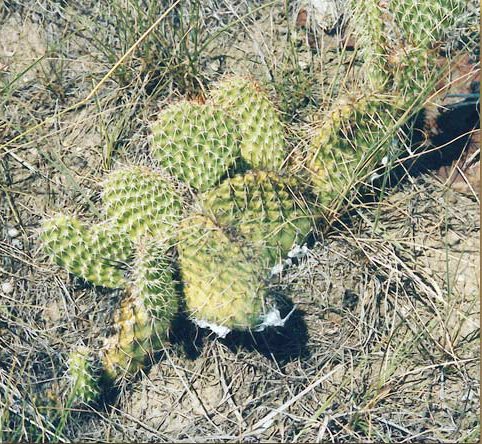Dyes and shellac during the time of the Lewis and Clark Expedition came from natural sources.
Until the early 16th century the only natural source of blue dye known in Europe was a plant commonly called “woad”—Isatis tinctoria, as it was later named by 18th-century botanists—that was imported from the steppes and deserts of the Caucasus.[1]Jamieson B. Hurry, The Woad Plant: and its Dye, 1a ed. (Clifton, New Jersey: Augustus M. Kelley, 1973). Also John Edmonds, Medieval Textile Dyeing, Historic Dyes Series, No. 3 (Little Chalfont : J. … Continue reading However, after the Portuguese explorer Vasco da Gama (c. 1469–1538) opened a trade route to the Orient by sailing around the southern tip of Africa in 1498, a much deeper, brighter hue ranging from dark blue to grayish purple-blue was drawn from the “true indigo” plant imported from India—Indigofera tinctoria. Spurred by the rapid expansion of cotton growing, Indigo became a highly profitable cash crop in South Carolina before the 18th century was over.[2]Andrea Feeser, Red, White, and Black Make Blue: Indigo in the Fabric of Colonial South Carolina Life (Athens, Georgia: University of Georgia Press, 2013).
Historically, the dominant source of red dye was the root of the madder plant (Rubia tinctorum L., literally “red dye” in New Latin), which was first imported from Bengal—which accounts for its alternate Hindi name, “munjeet”—but the best European madders eventually came from Holland and the vicinity of the ancient Greek city, Smyna. Around 1850 it began to be cultivated successfully in Massachusetts and Georgia. The most popular color was the bright “Turkey red”—so-called for the place, not the fowl—which was especially suited to the dyeing and printing of cotton textiles.[3]Sarah Lowengard, “The Creation of Color in Eighteenth-Century Europe,” gutenberg, www.gutenberg-e.org ; Columbia University Press and the American Historical Association (accessed 29 … Continue reading
There were two kinds of red animal dye. The oldest one imparted rich tones of crimson and and scarlet especially to silk fabrics. It was made from dried bodies of the female insect of the genus Kermes (kermes, a Persian/Sanscrit word meaning “crimson,” pron. KRIM-zənl) and the species vermilio, which thrives on the sap of the Kermes oak trees native to lands surrounding the Mediterranean Sea, and is known to have been in common use during the 9th century. The other animal dye, which superseded the Kermes, was made of the similarly treated bodies of another scale insect, the cochineal, formally known as Dactylopius coccus, which deposited their eggs on the stems of the plains prickly pear cactus Opuntia polyacantha Haw. Occasionally during their transits of present-day Montana and Idaho, the whole Corps of Discovery must have seen the cochineals’ fluffy white tents on the fringes of the thorniest cactus of them all, but didn’t realize what they were looking at, for none of the journalists ever made note of it. If anyone had dared to pick one of the cocoons from between the cactus spines, pulled it apart, and squeezed the tiny dark dot between their fingers, their bloody fingertips might have tipped them off to what it was. Attempts were made during the 17th and early 18th centuries to cultivate cochineals for the dye trade in the Carolinas, but the climate wasn’t quite suited to the species, and the efforts waned and died. Both the kermes and cochineal dyes eventually yielded to the more economical vegetable dyes sources, which by the close of the 19th century were summarily displaced by the still cheaper chemical (aniline) dyes.
The dye called “Turkey red” was preferred by the British, French and American armies at the end of the 18th century. It was produced by treating the crystaline compound alizarin (a-LIZ-er-in), from the root of the madder plant, with aluminum hydroxide, shifting the hue from orange red to medium red.
Black dye of various qualities came from several sources, but the best was from the heart of a spiny tropical American tree called logwood. Americans also used black walnuts to make a dark brown or black stain, particularly for use on leather.
Incidentally, the shellac used to add rigidity to the beaver hats the men wore was made from lac, the resinous incrustation formed on twigs and branches of trees by the female of an East Indian insect, Laccifer lacca, (LAH-si-fer LAH-ka) which is related to the cochineal insect.
Until synthetic dyes were introduced in the 1850s, and shellacs in the 20th century, all those commodities had to be imported. Thus President Thomas Jefferson‘s embargo on certain foreign trade in 1807 resulted in a shortage of blue dye during the War of 1812, and U.S. soldiers were then dressed in gray instead of blue. The beaver hat went out of style beginning in the 1830s, when increased trade with the Orient made silk hats less expensive and lighter in weight than beaver felt.
Notes
| ↑1 | Jamieson B. Hurry, The Woad Plant: and its Dye, 1a ed. (Clifton, New Jersey: Augustus M. Kelley, 1973). Also John Edmonds, Medieval Textile Dyeing, Historic Dyes Series, No. 3 (Little Chalfont : J. Edmonds, 2003). |
|---|---|
| ↑2 | Andrea Feeser, Red, White, and Black Make Blue: Indigo in the Fabric of Colonial South Carolina Life (Athens, Georgia: University of Georgia Press, 2013). |
| ↑3 | Sarah Lowengard, “The Creation of Color in Eighteenth-Century Europe,” gutenberg, www.gutenberg-e.org ; Columbia University Press and the American Historical Association (accessed 29 August 2014). |

